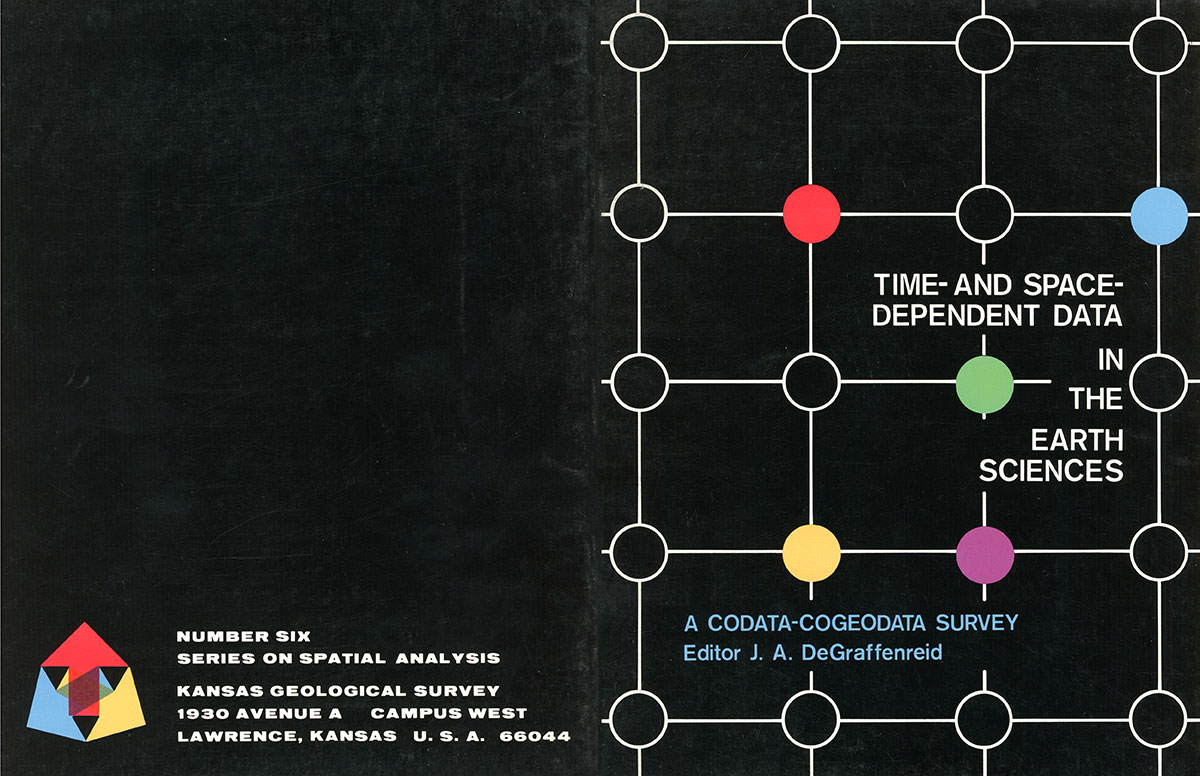
Kansas Geological Survey, Spatial Analysis Series 6, originally published in 1982

Originally published in 1982 as Kansas Geological Survey Spatial Analysis Series 6. This is, in general, the original text as published.
This slim volume is the culmination of more years' effort than its modest thickness might suggest. The usual difficulties of inspiration, coordination, and communication common to all committee activities were compounded by traumatic changes in the parent organizations themselves. The directorship of COGEODATA passed from the dynamic hands of W. W. Hutchison (Canada) to those of Richard Sinding-Larsen (Norway), and with the transition came a shift in emphasis from scientific review and synthesis to third-world technology transfer. The subject-area Working Groups of COGEODATA have been phased out; this publication is the final activity of the Working Group on Data Capture and Display.
CODATA itself was not without its vicissitudes. The ambitious project on time- and space-dependent data was to review the state of the art in each of ten scientific disciplines ranging from astronomy to biomedicine to soil science. Synoptic reviews of techniques used in each discipline to gather, store, and analyze time- and space-dependent data were to be published as a single, large volume, extensively cross-indexed to aid interdisciplinary investigations. The central Task Group, chaired by Roger Tomlinson (Canada) and funded by CODATA and UNESCO, established Working Groups in each field. Unfortunately, the fiscal resources necessary to continue the coordination and exhortation of the Working Groups did not appear, and deprived of strong leadership, activity in most areas slowly ground to a halt.
Perhaps geologists are more dogged than other scientists, or perhaps the synergism from the melding of two groups, both in their last hours, was sufficient to propel the geology committee to completion of its task. Perhaps is was just a nagging editor. In any case, here is the result—a unique compendium, complete with glossary, of the methods and techniques used to study time- and space-dependent phenomena in geology. It is the Working Group's hope that this review will be interesting and useful, not only to Earth scientists, but to others who may be able to adopt our approaches.
As Chairman, I would like to extend my sincere thanks to the members of the Working Group who gave so freely of their knowledge and effort in what at times must have seemed a futile cause. I would also like to thank the Kansas Geological Survey for providing the mechanism for final publication of the Working Group's efforts.
John C. Davis, Chairman
CODATA/COGEODATA Working Group on
Time- and Space-Dependent Data in Geology
The discipline of geology embodies two distinct but intertwined objectives. On one hand it is committed to resolving and understanding the evolution and history of the Earth. On the other, it is equally committed to finding and extracting those natural resources of the Earth that are essential for the maintenance of human civilization. Both of these objectives are closely related; the search for natural resources provides much of the data and financial backing for more basic studies, and "academic" investigations (as into plate tectonics) provide the framework for major exploration efforts.
Both types of investigation are intensely involved with the analysis of temporal and spatial data. All geologic data are characterized by both spatial and temporal aspects, although in specific instances these may not be emphasized. Geologists are concerned with the evolution of a three-dimensional Earth through time, in which changes in the temporal domain are intimately linked to changes in the geographic dimensions. For the sake of comparison with other scientific fields, and to simplify the exceedingly complex interrelations which exist, spatial and temporal methodologies will be separated in this report. This distinction is artificial, for the two aspects are not independent. Indeed, it is this interdependency between changes which have occurred through geologic time with variation in space within the Earth that gives the study of geology its unique character.
The literature of geology contains extensive references to classical methods of univariate and multivariate analysis. Elementary statistical procedures are discussed in the book by Till (1974). Griffiths (1967) has explored the applications of analysis of variance to sedimentary petrology, and Koch and Link (1970, 1971) provide discussions of the use of analysis of variance, regression, and other statistical tests in mine evaluation. Numerous authors, mostly paleontologists, have utilized classification techniques such as cluster analysis to categorize fossil organisms, sedimentary environments, and other geologic entities which possess multiple attributes. Extensive applications of eigenvector techniques, including principal components analysis, canonical correlation, and factor analysis, have been made in the Earth sciences; these are discussed at length in Jöreskog, Klovan, and Reyment (1976). However, these methods and applications do not explicitly make use of the spatial and temporal character of geologic data, and so are indistinguishable in their basic nature from similar studies in chemistry, biology, and other sciences. Such methods and their applications will not be considered further here; an overview of these is given by Davis (1973).
Davis, J. C., 1973, Statistics and Data Analysis in Geology: John Wiley & Sons, New York, 550 p.
Griffiths, J. C., 1967, Scientific Method in Analysis of Sediments: McGraw-Hili Book Co., New York, 508 p.
Jöreskog, K. G., J. E. Klovan, and R. A. Reyment, 1976, Geological Factor Analysis: Elsevier, Amsterdam, 178 p.
Koch, G. S., and R. F. Link, 1970, Statistical Analysis of Geological Data, Volume 1: John Wiley & Sons, New York, 375 p.
Koch, G. S., and R. F. Link, 1971, Statistical Analysis of Geological Data, Volume 2: John Wiley & Sons, New York, 438 p, [Both volumes are now available as a single paperbound edition from Dover Publications, New York.]
Till, R., 1974, Statistical Methods for the Earth Scientist: John Wiley & Sons, New York, 154 p.
Kansas Geological Survey
Placed on web Jan. 16, 2019; originally published 1982.
Comments to webadmin@kgs.ku.edu
The URL for this page is http://www.kgs.ku.edu/Publications/Bulletins/SpA6/index.html